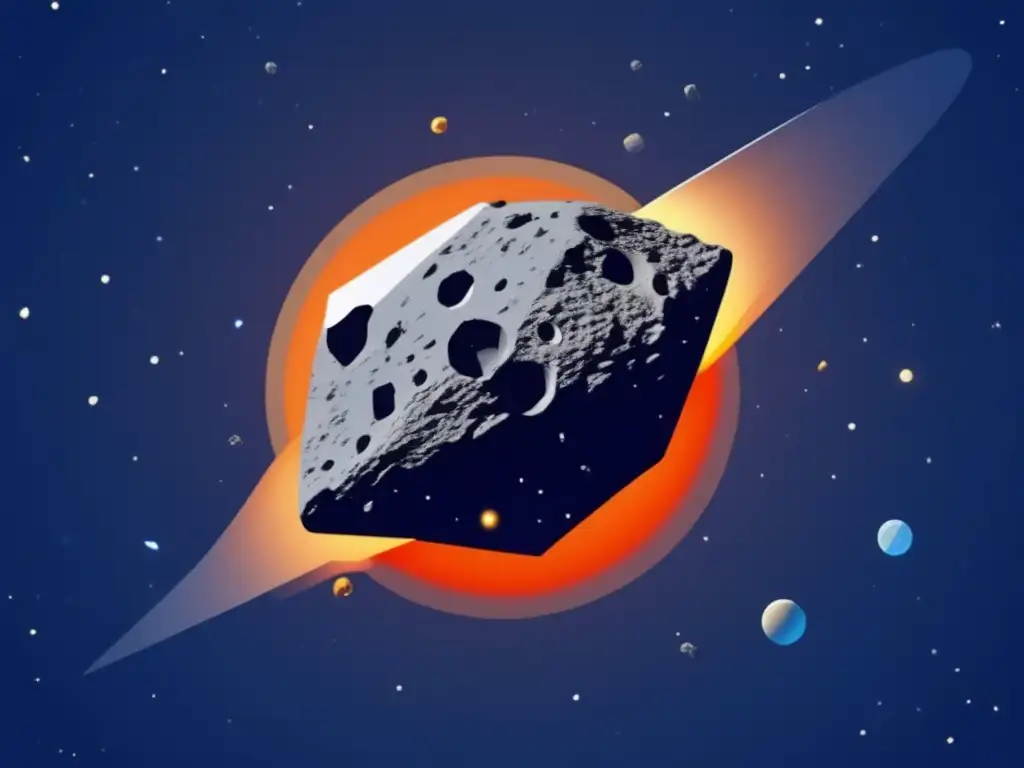The Unforeseen Journey Of Asteroid 2018 LA

Introduction
The discovery of asteroids has been a fascinating topic for astronomers around the world for many decades. These celestial objects have provided valuable insight into the origins of our solar system and continue to captivate researchers' attention. Astronomers were recently presented with a unique opportunity to study an asteroid that was headed for Earth. This asteroid was named 2018 LA and provided researchers with unique insight into the nature of these celestial objects. This article will explore the unforeseen journey of this fascinating asteroid and the valuable information it provided about our solar system.
The Discovery of Asteroid 2018 LA

The First Observations
On June 2nd, 2018, astronomers discovered a small asteroid using the ATLAS-MLO telescope located in Hawaii. The asteroid was estimated to be approximately 6 feet (2 meters) in size and was given the designation 2018 LA. Further observations of the asteroid revealed that it was on a possible collision course with Earth, making it a fascinating object to study.
The Final Moments
On June 2nd, 2018, just a few hours after its discovery, asteroid 2018 LA entered Earth's atmosphere and disintegrated over Botswana, Africa. The asteroid exploded with the energy equivalent of approximately 10 tons of TNT and was observed by dozens of eyewitnesses. Fortunately, the asteroid was small enough that no damage was caused by the explosion. However, the study of the event provided researchers with valuable information about the nature of asteroids and their potential impact on Earth.
The Implications
This event highlighted the importance of developing plans to detect and track potentially hazardous asteroids. NASA's Planetary Defense Coordination Office (PDCO) is responsible for identifying potentially hazardous asteroids and developing plans to mitigate potential impacts. The discovery of asteroid 2018 LA reinforced the importance of these efforts and underscored just how vital it is to continue studying these celestial objects.
The Nature of Asteroids

What Are Asteroids?
Asteroids are small, rocky bodies that orbit the sun. They are often referred to as minor planets and can range in size from a few feet to several miles in diameter. The majority of asteroids are located in the asteroid belt, which is located between the orbits of Mars and Jupiter. However, some asteroids have orbits that take them near Earth, making them potential hazards to our planet.
The Importance of Studying Asteroids
Asteroids provide valuable insight into the origins of our solar system. By studying the composition and properties of asteroids, researchers can gain a better understanding of how our solar system formed and evolved over time. Additionally, the study of asteroids can provide valuable information about potential hazards to our planet. It is important to continue studying these celestial objects to better understand their nature and mitigate any potential threats they may pose.
The Future Study of Asteroids
Future studies of asteroids will likely involve the use of advanced telescopes and spacecraft. NASA's Osiris-Rex mission, which launched in 2016, is set to arrive at the asteroid Bennu in 2020. The spacecraft will collect a sample of the asteroid and return it to Earth for further study. Additionally, the European Space Agency's Hera mission, set to launch in 2024, will involve a detailed study of the binary asteroid system Didymos. These missions will provide valuable new insights into the nature of asteroids and how we can study them in greater detail.
Frequently Asked Questions

-
What is an asteroid?
An asteroid is a small, rocky body that orbits the sun.
-
Why do we study asteroids?
Asteroids provide valuable insight into the origins of our solar system and potential hazards to our planet.
-
What happened to asteroid 2018 LA?
Asteroid 2018 LA exploded in Earth's atmosphere over Botswana, Africa.
-
How do we detect potentially hazardous asteroids?
Potentially hazardous asteroids are detected using telescopes that scan the sky for objects that could pose a threat to our planet.
-
What is NASA's Planetary Defense Coordination Office?
NASA's Planetary Defense Coordination Office is responsible for identifying potentially hazardous asteroids and developing plans to mitigate potential impacts.
Conclusion
The study of asteroids continues to be a fascinating field of research for astronomers around the world. The unforeseen journey of asteroid 2018 LA provided researchers with valuable new insights into the nature of asteroids and their potential impact on our planet. As we continue to study these celestial objects, we will gain a better understanding of our solar system's origins and any potential threats to our planet. Please share any thoughts or comments you may have about this article in the comments section below.
Additional Resources

- NASA Asteroid Page
- Space.com Asteroid, Meteors, and Comets Page
- Planetary Society Planetary Defense Page
 The Discovery And Study Of Near-Earth Asteroid 3200 Phaethon
The Discovery And Study Of Near-Earth Asteroid 3200 Phaethon When Asteroids Become Comets: The Story Of Chiron
When Asteroids Become Comets: The Story Of Chiron 2008 TC3: The Asteroid That Rained Over Sudan
2008 TC3: The Asteroid That Rained Over SudanIf you want to discover more articles similar to The Unforeseen Journey Of Asteroid 2018 LA, you can visit the Asteroid Discoveries category.
Leave a Reply

Articulos relacionados: